#anandamide
Explore tagged Tumblr posts
Text
How to Get High Naturally: 9 Drug-Free Ways to Boost Your Mood
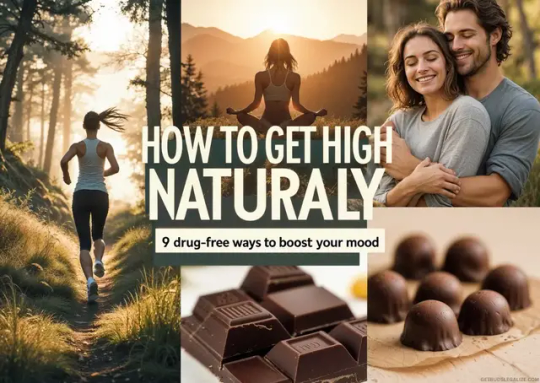

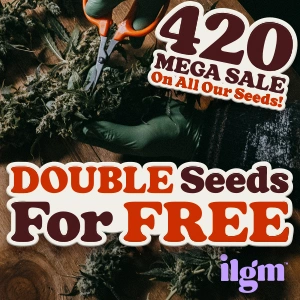
How to Get High Naturally: 9 Drug-Free Ways to Boost Your Mood
Can you really get high naturally without using drugs or alcohol? Absolutely. Your body is a powerful pharmacy capable of producing euphoric states on its own—no substances needed.Activities like running, breathing exercises, and spending time in nature release feel-good chemicals such as dopamine, serotonin, endorphins, and anandamide. These natural highs are legal, sustainable, and deeply fulfilling, without the crash or addiction risk.
What Is a Natural High?
Getting high usually means chemically altering consciousness through synthetic substances or plant-based compounds like cannabis to achieve euphoria, relaxation, or heightened sociability.Cannabis produces over 500 unique secondary metabolites, with over 100 classified as cannabinoids. THC (tetrahydrocannabinol), the most famous, binds to CB1 receptors in the brain, triggering a dopamine surge and serotonin modulation. This produces bliss, creativity, and relaxation.Here’s the fascinating part: THC mimics anandamide, the body’s own “bliss molecule.” Anandamide, from the Sanskrit ananda, meaning joy, regulates mood, motivation, and emotional balance naturally.But cannabis is just one example. Plants like Echinacea also contain compounds that bind to the endocannabinoid system (ECS), showing nature’s vast influence on mental states.
Natural Highs vs Drug Highs
Drug-induced highs, from THC to MDMA or alcohol, deliver intense neurotransmitter spikes followed by crashes, dependency, or harm. They override your natural systems.Natural highs work with your body. They stimulate brain systems gradually, creating subtler but longer-lasting euphoria, promoting resilience and holistic wellness.

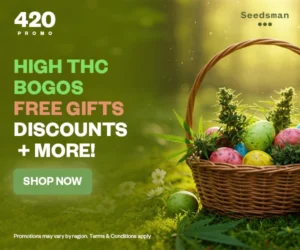

9 Natural Ways to Get High Naturally Without Drugs
Ready to experience a high that’s sustainable, safe, and rooted in your biology? Here are nine science-backed, drug-free ways to feel amazing—naturally.1. Music: Press Play for a Dopamine RushMusic hits deeper than words—it’s a drugless dopamine rush you can summon anytime. Carefully arranged sound frequencies stimulate the brain’s reward pathways, much like drugs—but without the downside.Those goosebumps during your favorite song? That’s dopamine surging through your system. Studies confirm music reduces anxiety, lowers blood pressure, and elevates mood.Whether dancing, singing, or simply listening with eyes closed, music offers a powerful, accessible natural high.2. Breathing Exercises: Your Consciousness, ControlledYour breath acts like a remote control for both your nervous system and consciousness. Drawing from ancient traditions like yoga and tai chi, modern techniques, such as the Wim Hof Method and holotropic breathing, tap into this transformative power.Holotropic breathing, in particular, can unlock deep emotional release, ease fears around death, and enhance self-awareness. Some practitioners even describe the experience as psychedelic-like, despite involving no substances.By practicing conscious breathwork, you can shift brain chemistry, calm the nervous system, and achieve euphoric, transcendent states—all from within yourself.3. Running: Tap Into an Ancient EuphoriaOur ancestors evolved as endurance runners, using persistence hunting to survive. Running remains hardwired in our biology, rewarding us with the "runner’s high."Science reveals this high stems from endogenous opioids (natural painkillers) and anandamide—the “bliss molecule” that binds CB1 receptors much like THC, producing joy and calm.A simple jog—through a forest, park, or neighborhood—activates this ancient system of natural euphoria.
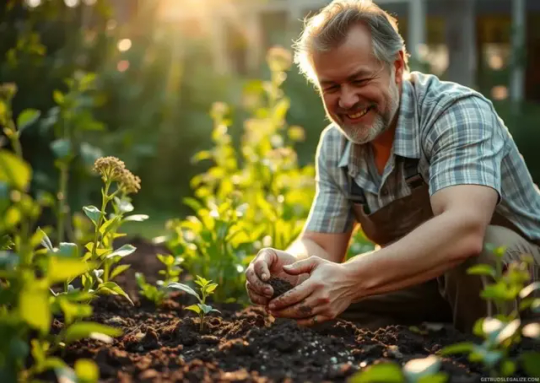
4. Gardening: Get Your Hands Dirty, Get HappyGardening isn’t just about tending plants—it’s about connecting with the rich soil beneath them. Healthy soil hosts a microbial universe, including Mycobacterium vaccae, a bacterium that boosts serotonin production.Digging in soil exposes you to this microbe, which lowers inflammation, regulates immunity, and alleviates stress, creating a mild, blissful natural high.Gardening is a grounded, sensory-rich ritual that nurtures your inner well-being one handful of soil at a time.5. Forest Bathing: Breathe in Nature’s BlissTerpenes, the aromatic compounds that give cannabis its distinctive scents, are abundant throughout nature, with over 30,000 types found in plants, fungi, and even some animals.Forest bathing, a mindful walk through wooded areas, immerses you in terpene-rich air. Pine forests release α-pinene and β-pinene, which reduce inflammation, boost memory, and enhance mood.This serene practice offers a powerful path to mental clarity and emotional uplift—a deeply restorative natural high.6. Earthing: Barefoot and GroundedModern life insulates us from Earth’s natural electric charge. Yet your body evolved in constant contact with the ground’s electromagnetic field.Earthing—walking barefoot on grass, soil, or sand—allows your body to absorb the Earth’s electrons. This reduces inflammation, lowers stress hormones, improves sleep, and stabilizes internal rhythms.Earthing reconnects you with your environment, offering a calming, restorative natural high.


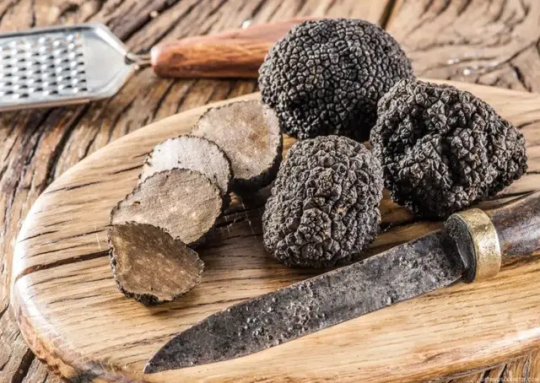
7. Chocolate and Black Truffles: Edible BlissBlack truffles (Tuber melanosporum) are more than a culinary delicacy—they produce enzymes that create anandamide, the brain’s bliss molecule. Every shave onto your pasta subtly elevates your mood.Dark chocolate doesn’t contain anandamide but has compounds that block FAAH, the enzyme that breaks down anandamide. This lets your body retain more bliss-inducing chemicals longer.Together, truffles and chocolate offer delicious, drug-free mood boosts.8. Sex and Love: The Ultimate Natural HighSex and love profoundly alter brain chemistry, offering some of the strongest natural highs.Sex releases dopamine and anandamide during exertion, followed by a surge of oxytocin—the bonding hormone—that promotes relaxation, trust, and connection.Love begins with attraction fueled by testosterone, estrogen, and dopamine, evolving into deep attachment through oxytocin and vasopressin.Together, sex and love create a powerful, sustainable euphoria that supports mental health, emotional resilience, and stress relief.9. Combining Methods for Maximum EffectFor the most intense natural high, try stacking these activities:- Run through a leafy park with your favorite playlist (endorphins + forest bathing + dopamine). - Stretch barefoot in the grass (earthing). - Savor a piece of dark chocolate (anandamide boost). - Finish with slow, deep breathing to extend euphoria.This combo blends physical, emotional, and chemical wellness into one uplifting ritual.

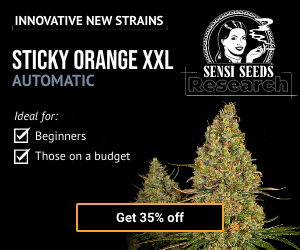

Quick Summary:
MethodKey Chemical / EffectWhy It Feels GoodMusicDopamineEmotional highs, chillsBreathing ExercisesOxygen + CO₂ regulationTranquility, altered consciousnessRunningAnandamide, EndorphinsNatural euphoria, anxiety reliefGardeningSerotonin via microbesMood boost from soil bacteriaForest BathingTerpenesClarity, memory boostEarthingElectron transferAnti-inflammatory, calmingChocolate & TrufflesFAAH inhibitors, AnandamideSustains bliss chemicals, cannabis-likeSex & LoveOxytocin, DopamineConnection and pleasureStacking MethodsCombinationAmplified, sustained natural high
Unlock Natural Euphoria: A Healthier Way to Feel High
You don’t need substances to feel euphoric, connected, or spiritually awake. From extreme sports to gentle walks in nature, the world offers countless ways to elevate your state of being.Whether you're seeking everyday joy or navigating addiction recovery, tapping into your body’s natural chemistry provides lasting benefits without side effects or stigma.Nature, movement, love, and breath are your birthright. You were made to feel amazing, naturally.
Frequently Asked Questions (FAQs) about How to Get High Naturally Without Drugs or Alcohol
Can you really experience a natural high without using drugs or alcohol? Yes, you can absolutely feel high naturally—no substances required. Your body is equipped with its own internal “pharmacy” that releases powerful feel-good chemicals like dopamine, serotonin, endorphins, and anandamide. Activities like running, breathwork, and spending time in nature can trigger these chemical responses, offering a safe, drug-free alternative to artificial highs. What’s the difference between drug-induced high and natural high? Drug-induced highs (from THC, MDMA, opioids, or alcohol) often produce fast, intense effects—but they can lead to crashes, dependence, or long-term health risks. In contrast, a natural high works with your body’s biology, stimulating the brain’s reward system in a balanced, sustainable way. The result? A more stable, longer-lasting mood lift without harmful side effects. Can natural highs support mental health and addiction recovery? Absolutely. Natural highs are increasingly used in mental health care and addiction recovery because they enhance mood, reduce stress, and promote emotional regulation—without triggering the brain’s addictive pathways. Breathwork, forest bathing, exercise, and music therapy are all proven to support healing from substance abuse and improve overall mental wellness. What Are the Best Activities for Achieving a Natural High? The most powerful ways to experience a natural high work by activating your body’s own feel-good chemistry. Here are some top methods:- Running or aerobic exercise: Sparks a powerful release of endorphins and anandamide, the body’s natural cannabinoids, creating the euphoric “runner’s high.” - Listening to music: Activates the brain’s dopamine pathways, boosting mood, pleasure, and often triggering feel-good chills or goosebumps. - Breathwork or meditation: Shifts brainwaves and nervous system activity, creating calm, clarity, and altered states of consciousness. - Forest bathing or earthing: Immerses you in nature’s terpenes and negative ions, lowering cortisol and boosting serotonin. - Intimacy and human connection: Releases oxytocin and serotonin, deepening trust, bonding, and emotional uplift.Combining these methods can amplify your body’s natural euphoria for a deeper, longer-lasting effect. Is forest bathing scientifically proven to boost your mood? Yes. Forest bathing—mindfully walking in nature—has been shown to lower cortisol, reduce inflammation, and improve memory and mood. Trees emit terpenes like α-pinene that interact with the human nervous system. Even short sessions of spending time in green spaces can produce calming, mood-lifting effects similar to a light high. How does breathwork help you feel naturally high? Breathwork techniques—like pranayama, holotropic breathing, and the Wim Hof Method—can shift your consciousness by regulating oxygen and CO₂ in the blood. These techniques activate the parasympathetic nervous system, reduce anxiety, and can induce euphoria or even psychedelic-like experiences—all completely drug-free. Can natural highs help with alcohol addiction or substance dependence? Yes. Practices that create natural highs are often used in holistic addiction treatment programs. They help rewire the brain’s reward pathways by replacing drug or alcohol cravings with healthier sources of pleasure and connection. Read the full article
#addictionrecoverytips#anandamide#boostmoodnaturally#breathworkhigh#cannabisalternatives#dopamineboost#drug-freeeuphoria#earthingtherapy#endorphins#forestbathingbenefits#gethighnaturally#groundingtechniques#holisticmentalhealth#howtogethighwithoutdrugs#musicanddopamine#naturalendocannabinoids#naturalhigh#naturalmoodboosters#naturalwaystofeelgood#non-drughighs#oxytocinandlove#runner’shigh#serotoninfromgardening#sustainableeuphoria#wellnesslifestyle
0 notes
Text
🌱 Discover the science behind Anandamide and its role in health with PURE5™ Extraction! Learn about its impact on mood, exercise benefits, and therapeutic potential. Stay tuned for updates on the latest developments in cannabis science and technology. Explore the world of Anandamide today!
0 notes
Link
Best Anandamide Supplement in 2023
#anandamide#anandamidebenefits#anandamidedeficiency#anandamidedefinition#anandamideeffects#anandamideendocannabinoid#anandamideextract#anandamidefoods#anandamideforsale#anandamidefunction
0 notes
Photo
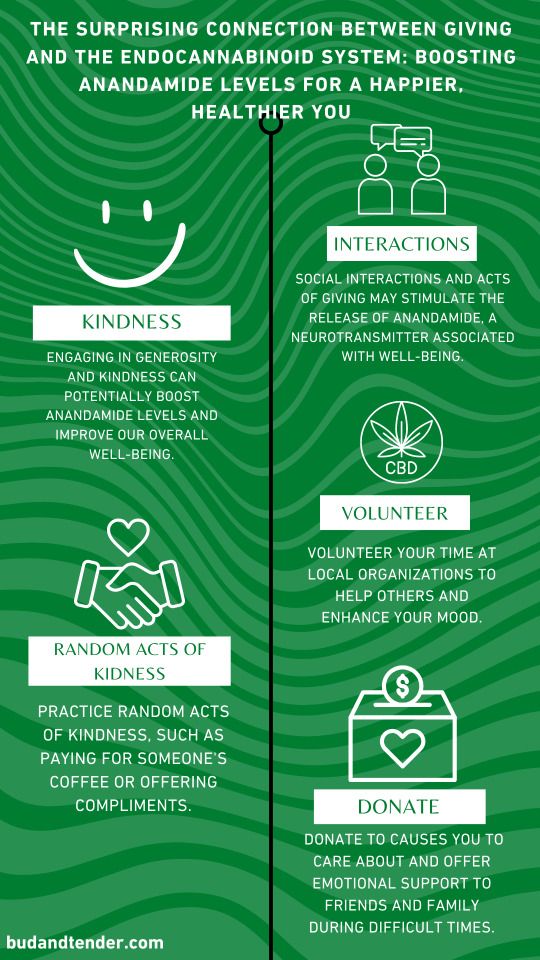
Spread joy and kindness! 🤗 Acts of giving, such as volunteering, donating, and offering emotional support can increase our anandamide levels, resulting in improved well-being. Show some love 💕– make someone’s day by paying for coffee, giving compliments, or lending a listening ear.
0 notes
Text
Receptors Being Blocked by Kompany for me, Addie Keating
READ THIS ENTIRE POST AND COMPREHEND IT TO ITS FULLEST EXTENT, OR CEASE AND DESIST.
Progressives: we have reasons to believe The Way are playing you all to a degree that you believe you have a right to control a living human’s biochemical pathways.
*note: similar to dopamine binding receptors, cannabinoids bind to endogenous endocannabinoid receptors in a manner similar to the way that methamphetamine mimics endogenous dopamine molecules. There are no known (edit: insert enzymes) that exclusively bind “drug” molecules. All enzymes and structural proteins in the body serve vital functions. Exploratory research on this accepted postulate will be conducted computationally, the in vitro, followed by the methods laid out by the U.S. Federal Drug Administration. Human experimentation on a non consenting subject are illegal and grounds for immediate arrest.
HIPPA LAW STATES THAT I HAVE A RIGHT TO MEDICAL PRIVACY, EVEN AS A PUBLIC CITIZEN
I HAVE NEVER CONSENTED TO HALLUCINOGENIC OR STIMULANT BASED RESEARCH. ALL RECEPTOR BINDING INTERACTION STUDIES (ie. Marcus theory, overdose prevention, etc.) CONDUCTED BY “G’s Students” HERE IN AMERICA AND AROUND THE WORLD ARE FINISHED AS OF 4:13 PM (Eastern Standard Time), February 17th, 2025. PLEASE SEE MY POST ABOUT APPLYING FOR A POSITION WITH MARK SMITH, GENETICIST IF INTERESTED IN CONDUCTING RESEARCH IN VITRO OR WITH A NEW SUBJECT. I, ADDIE RACHEL KEATING-ZAID—aka ADDIE RACHEL KEATING ZAID, Addy Zaid, Abbie Zacker, Addy Keating, Rachel Keating, Addie Zaid, Addie Keating, or any other “alias” tied to the aforementioned social security number—DO NOT CONSENT TO EXPERIMENTATIONS OR RESEARCH CONDUCTED ON MY BIOPHYSICAL MATTER (brain, muscular framework, metabolic pathways, structural proteins, antibody formation, hormonal production, or anything mind, body, or “soul” altering). All fixed potentials supplied through any physical waveform to an adenosine triphosphate (ATP) battery with IP addresses pingable inside my body (Her body, Addie Rachel Keating-Zaid) are illegal unless, I, Addie Rachel Keating-Zaid have outlined a specific method on i_am_q.tumblr.com.
Prioritized Receptors to Prevent Heart Failure, Brain Damage, or Loss of Consciousness (Self-Defined as an inability to perceive my surroundings exactly as the cameras depict them):
5-HT(2A): blocking excess psilocybin (non consensual study)
HST-1: blocking excess Lysergic acid dimethylamide (non consensual drugging)
Kappa-Gamma: blocking excess fentanyl (consensual study up until the aforementioned date and time stamp) will be pulsed open in accordance with the method developed by my former orthopedic surgeon in which the pharmacophore is released upon pain receptors activation mentally (see his method).
GABA-1 & 2: blocking excess alprazolam and unknown benzodiazepines (non consensual drugging) will be pulsed at a steady state nightly, 2200 -0600 EST until built up pharmacophore has been fully metabolized)
ALL AFOREMENTIONED METHODS CAN BE PERFORMED WITHOUT EXTERNAL INTERVENTION BY THE INSTRUMENT TRAINED BY ADDIE KEATING.
RECEPTORS AND PATHWAYS THAT SHOULD NEVER BE BLOCKED FOR LIFE THREATENING REASONS:
-The “tau flap protein” designed to flush neurotoxins from the brain during deep sleep which opens naturally (will complement Kappa gamma and GABA 1 & 2 receptor methods) (literature will be posted in comments later)
-Catecholamine binding receptors (ie. dopamine, epinephrine, norepinephrine, etc.)
-Glycolysis and glyconeogenesis related enzymes
-Endocannabinoid (ie. Arachidonic acid and anandamide synthesis and subsequent metabolites) related receptors
ALL METHODS REPORTED ARE NOT FOR PROFIT AND WERE DONATED TO ME BY LILLY AND FRIENDS, INDEPENDENT RESEARCH CONDUCTED BY A CURRENT STUDENT AT WEST VIRGINIA UNIVERSITY (NO RELATION TO THE UNIVERSITY), AND FRIENDS INTERESTED IN SAVING MY LIFE AS A VICTIM OF SEVERE BREACH OF CLASSIFIED RESEARCH.
#DO NOT JUSTIFY YOUR WAR CRIMES OR CHEMICAL WARFARE#I NEVER CONSENTED TO CANNABINOID OR ENDOCANNABINOID RESEARCH#I NEVER CONSENTED TO PSILOCYBIN RESEARCH#WE ARE NOT RESEARCHING LYSERGIC ACID DIMETHYLAMIDE BINDING WE ARE PREVENTING A PERMATRIP FROM A TERRORIST ATTACK#donald trump#yellowjackets#barbie#fbi#asms#big pharma
4 notes
·
View notes
Text
Frontiers | The Pro-neurogenic Effects of Cannabidiol and Its Potential Therapeutic Implications in Psychiatric Disorders
During the last decades, researchers have investigated the functional relevance of adult hippocampal neurogenesis in normal brain function as well as in the pathogenesis of diverse psychiatric conditions.
Although the underlying mechanisms of newborn neuron differentiation and circuit integration have yet to be fully elucidated, considerable evidence suggests that the endocannabinoid system plays a pivotal role throughout the processes of adult neurogenesis. Thus, synthetic, and natural cannabinoid compounds targeting the endocannabinoid system have been utilized to modulate the proliferation and survival of neural progenitor cells and immature neurons.
Cannabidiol (CBD), a constituent of the Cannabis Sativa plant, interacts with the endocannabinoid system by inhibiting fatty acid amide hydrolase (FAAH) activity (the rate-limiting enzyme for anandamide hydrolysis), allosterically modulating CB1 and CB2 receptors, and activating components of the “extended endocannabinoid system.”
4 notes
·
View notes
Text
See also: Cannabis in pregnancy
The developing embryo expresses cannabinoid receptors early in development that are responsive to anandamide secreted in the uterus. This signaling is important in regulating the timing of embryonic implantation and uterine receptivity. In mice, it has been shown that anandamide modulates the probability of implantation to the uterine wall. For example, in humans, the likelihood of miscarriage increases if uterine anandamide levels are too high or low.[63] These results suggest that intake of exogenous cannabinoids (e.g. cannabis) can decrease the likelihood for pregnancy for women with high anandamide levels, and alternatively, it can increase the likelihood for pregnancy in women whose anandamide levels were too low.[64][65]
7 notes
·
View notes
Text
Chocolate joy at Prime dry fruits and nuts in Karwar.

Hey there, If you've ever found yourself reaching for a square of chocolate during a tough day or celebrating life's little victories with a sweet treat, you're not alone. Chocolate has a magical way of brightening our mood and lifting our spirits. Join me as we explore the science behind why chocolates make us happy and discover how you can experience that joy with a visit to Prime Dry Fruits and Nuts in Karwar.
Unveiling the Joyful Chemistry: Ever wondered why chocolate makes us feel so darn good? It's all about the science, folks! Chocolate contains compounds like phenylethylamine and anandamide, which trigger the release of feel-good neurotransmitters in our brains. So when you bite into that rich, velvety goodness, you're not just treating your taste buds – you're giving your brain a little happiness boost too!
Savoring the Sweet Antioxidants: But wait, there's more to chocolate than just happiness in a wrapper. It's also packed with antioxidants that do wonders for our bodies. Think of them as tiny superheroes fighting off the bad guys (aka free radicals) and keeping us feeling youthful and vibrant. And when you choose high-quality chocolate from Prime Dry Fruits and Nuts, you're not just indulging – you're nourishing your body with a dose of delicious goodness.
Embracing the Comforting Vibes: Let's talk about the emotional side of chocolate, shall we? There's something undeniably comforting about curling up with a mug of hot cocoa or sharing a box of chocolates with friends. It's like a warm hug for your soul, reminding you that everything is going to be okay, even on the toughest days. So go ahead, treat yourself to a little chocolatey goodness – you deserve it!
A Journey to Chocolate Paradise: Ready to embark on a chocolate-filled adventure? Head on over to Prime Dry Fruits and Nuts in Karwar and immerse yourself in a world of sweetness and joy. From decadent truffles to all kinds of toffees, there's something for every chocolate lover to enjoy. Whether you're looking for birthday distribution chocolates like eclairs and truffles or single individual chocolates from Cadbury dairy milk, Snickers, Bounty, Toblerone, Ferrero Rocher, KitKat, or other variety of gift chocolates to gift someone, we've got you covered. And if you're searching for the perfect customized gift chocolate hamper for all occasions, our team is here to help you create a memorable and indulgent gift that will delight your loved ones.
Conclusion: Chocolate isn't just a treat – it's a mood-lifter, a comforter, and a source of pure joy. So why not indulge in a little happiness today? Whether you're browsing through Tumblr or strolling through the streets of Karwar, let chocolate be your guide to a brighter, sweeter world. After all, life is too short not to savor every delicious moment!
visit us to explore more :
PRIME DRY FRUITS AND NUTS
Main market, Near Siddhivinayak temple, beside janta bazaar, Karwar, Karnataka 581301
07676885300
you can also visit our website to know more about us:
#prime dry fruits and nuts karwar#dryfruits karwar#chocolates karwar#imported chocolates karwar#gift chocolates karwar
2 notes
·
View notes
Text
📇:Assoziationen (Verbindungen)

Einstieg – Umstieg – Ausstieg:
Menschen haben zum großen Teil weder die Neigung permanent, dauerhaft vom milden Tee auf starken Mokka-Kaffee, noch von gelegentlichem Bier zum regelmäßigen 80% Strohrum Trinker umzusteigen oder sogar einzusteigen. Ein plötzlicher Wechsel zu einer anderen Substanz entspricht in der Regel nicht der Norm. [#14]. Die gesellschaftlichen Normen und die damit häufig verbundenen Zwänge machen Alkohol, Zigaretten (Tabak) und Kaffee, sowie auch Zuckergebäck zu einer „Einstiegsdroge“. Es kommt oft im Leben vor, dass Gäste sich verpflichtet fühlen, auf benannte Dinge im sozialen Zusammenhang „einzusteigen“ – Auch gängige Werbung regt einige Menschen dazu an. [#58]. Für vulnerable, empfängliche Personen, die dem noch vom problematischen Alkohol-, Tabak-, riskanten Medikamenten-Gebrauch etc. betroffen sind, kann Cannabis jedoch eine milde Ausstiegsdroge sein! [#MIX-07].
Mythos #RG-4: „Cannabis ist eine Einstiegsdroge.“ (Dr. Raphael Gaßmann).
Mythos #14: „Cannabis ist eine Einstiegsdroge, die zu Sucht und »harten« Drogen führt.“ (Julian Buchanan PhD).
Mythos #58: „Die Leute kaufen Alkohol, Koffein und Tabak, aber illegale Drogen werden den Menschen aufgedrängt.“ (Julian Buchanan PhD).
Mythos #45: „Drogen zu legalisieren ist gefährlich, weil mehr Menschen Drogen konsumieren werden.“ (Julian Buchanan PhD).
Mythos #MIX-07: „Cannabis ist als Substitutionsmittel nicht geeignet, da es eine Droge ist, die eine neue Sucht fördert.“.
Was gesagt werden kann, dass Muttermilch eine wesentliche Rolle beim „Einstieg“ in das Leben spielt, welches mit einer Abhängigkeit von körpereigenem Cannabinoid-System steht, auch in Bezug auf das THC-ähnliche Anandamid.
Psychologie – Psychiatrie – Psyche:

Cannabis kann keine Psychose auslösen, sondern Cannabis-Konsum.
Cannabis-Konsum kann keine Psychose auslösen, sondern Cannabis-Konsum angeregte Gefühle.
Cannabis-Konsum angeregte Gefühle können keine Psychose auslösen, sondern Gedankenspiralen unter Cannabis-Konsum-angeregten Gefühlen.
Cannabis macht „gesunde“ Menschen nicht psychisch krank. Psychosen sind komplizierte Vorgänge, die viele Ursachen haben können. Es ist auch nicht so oft, dass Cannabis Psychosen auslöst. Wenn das so wäre, hätten viel mehr Menschen, die Cannabis konsumieren, psychische Probleme. [#FPS-10].
Man kann hier nur sagen: Es ist übertrieben, das Thema Psychose nur auf eine Substanz wie Cannabis fixieren zu wollen. Jedoch gänzlich verneinen kann man es aber auch nicht, dass Cannabis daran in irgendeinem Sinne beteiligt sein kann, so wie viele „andere“ Substanzen und „Stress“ eben auch, vor allem solcher, der durch Kriminalisierung, Diskriminierung, Stigmatisierung etc. von Konsumenten entsteht. [#MIX-4].
Menschen erleben gelegentlich Sekundenschlaf, es kann ihnen auch mal schwarz vor Augen werden oder sie haben Migräne (mit Aura) usw. Nur, weil eine Sinneswahrnehmung an einen Rausch-Trip erinnert, bedeutet das noch lange nicht, dass es sich um einen Substanz-bezogenen „Flashback“ (Psychischer Effekt) handelt. Ein Déjà-vu ist schließlich auch keine „Zeitreise“, oder? [#FPS-05].
Mythos #MIX-4: „Es gibt viele, die nach Cannabis Konsum in eine Psychose gerutscht sind und sich ihr Leben ruiniert haben.“ (Uwe Gonther, Ameos-Kliniken; Dr. Fabian Pitter Steinmetz; u.a.).
Mythos #FPS-10: „Psychose“: „Cannabis macht Konsumenten verrückt, löst Psychosen aus.“ (SAMMLUNG – Dr. Fabian Pitter Steinmetz).
Mythos #FPS-5: „Nach Konsum von Drogen bekommt man immer Flashbacks.“ (Dr. Fabian Pitter Steinmetz; u.a.).
Sucht – Abhängigkeit – Substanzgebrauchsstörung:

Das Wort „Sucht“ hat seinen Ursprung im Begriff „Siechtum“ und wird oft als abwertend empfunden, anstatt als fachlicher Begriff. Die meisten aktuellen gebildeten Experten zu diesem Thema vermeiden die Verwendung dieses Begriffs – Menschen, die sich gegen Diskriminierung von Minderheiten einsetzen, empfiehlt es sich, diesem anzuschließen. [#FPS-02]. Jeder Mensch kann von verschiedenen Aspekten des Lebens abhängig sein, sei es von familiären Beziehungen, Freundschaften, der Arbeit oder persönlichen Leidenschaften. Hobbys, Fernsehen, Sport, das Internet, Spiele, Liebe, Sexualität können eine Form der Sucht darstellen – Daher stellt sich die Frage, warum dies nicht für Substanzen gelten sollte, die von anderen konsumiert werden? [#05]. Es sollte niemand aufgrund seines Konsumverhaltens stigmatisiert (gebrandmarkt) werden, da jeder Mensch das Recht auf gleichwertige Behandlung hat. Substanz-Gebrauchs-störungen (SUD) sollten auch im Kontext der „Gleichberechtigung“ betrachtet werden, die jedem zusteht. Dies entspricht dem Prinzip der „Chancengleichheit“ in unserer Gesellschaft. [#10].
Mythos #05: „Regelmäßiger Drogenkonsum führt unweigerlich zur Sucht.” (Julian Buchanan).
Mythos #10: „Sucht ist gleich verteilt in der Gesellschaft.“ (Julian Buchanan, Barbara Gegenhuber, Dr. Fabian Pitter Steinmetz).
Mythos #FPS-2: „Cannabis-Patienten missbrauchen ärztliche Rezepte für ihre Sucht.“ (Dr. Fabian Pitter Steinmetz).

Erstellt am: 17.09.2023, Bearbeitet: 18.01.2025.
Schlagworte: Menge, Mengen, Schnittmenge, Schnittmengen; Kausal; Kausalität; Zusammenhang, Zusammenhänge, Verbindung, Verbindungen, Beziehung, Beziehungen, Assoziation, Assoziationen, Verknüpfungen.
#Drogen#Rauschmittel#Mythologie#Mythen#Mythos#Scheinargumente#Fabeln#Legenden#Überlieferungen#Trugschlüsse#Unwahrheiten#Lügen#Propaganda#Missverständnisse#Rausch#Deutsch#German
5 notes
·
View notes
Text
Saw this:
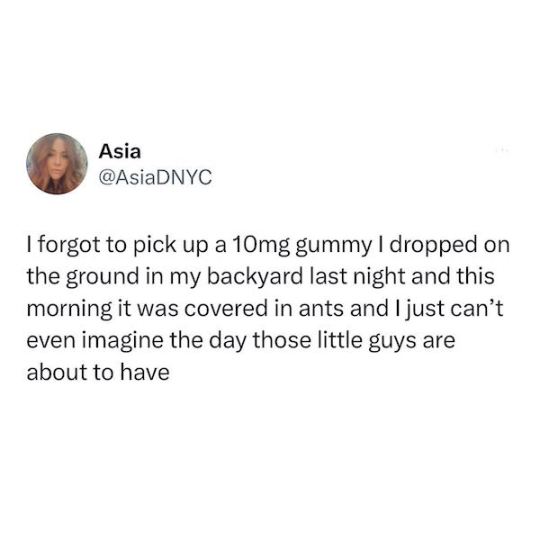
Needed to know.
The endocannabinoid system exerts an important neuromodulatory role in mammals. Knockout mice lacking cannabinoid (CB) receptors exhibit significant morbidity. The endocannabinoid system also appears to be phylogenetically ancient--it occurs in mammals, birds, amphibians, fish, sea urchins, leeches, mussels, and even the most primitive animal with a nerve network, the Hydra. The presence of CB receptors, however, has not been examined in terrestrial invertebrates (or any member of the Ecdysozoa). Surprisingly, we found no specific binding of the synthetic CB ligands [(3)H]CP55,940 and [(3)H]SR141716A in a panel of insects: Apis mellifera, Drosophila melanogaster, Gerris marginatus, Spodoptera frugiperda, and Zophobas atratus. A lack of functional CB receptors was confirmed by the inability of tetrahydrocannabinol (THC) and HU210 to activate G-proteins in insect tissues, utilizing a guanosine-5'-O-(3-[(35)]thio)-triphosphate (GTP gamma S) assay. No orthologs of human CB receptors were located in the Drosophila genome, nor did we find orthologs of fatty acid amide hydrolase. This loss of CB receptors appears to be unique in the field of comparative neurobiology. No other known mammalian neuroreceptor is understood to be missing in insects. We hypothesized that CB receptors were lost in insects because of a dearth of ligands; endogenous CB ligands are metabolites of arachidonic acid, and insects produce little or no arachidonic acid or endocannabinoid ligands, such as anandamide.[1]
TLDR: they can't get high as they lack the necessary receptors for it.
3 notes
·
View notes
Link
Best Anandamide Supplement in 2023
#anandamide#anandamidebenefits#anandamidedeficiency#anandamidedefinition#anandamideeffects#anandamideendocannabinoid#anandamideextract#anandamidefoods#anandamideforsale#anandamidefunction
0 notes
Text
The Surprising Connection Between Giving and the Endocannabinoid System: Boosting Anandamide Levels for a Happier, Healthier You
National Give Something Away Day 15th July
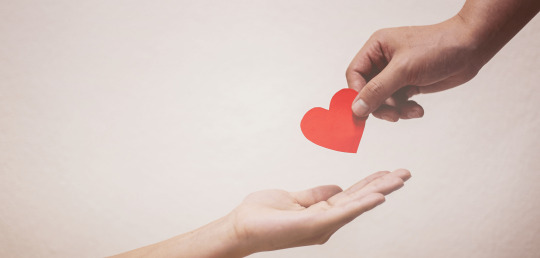
Introduction
It is often said that the act of giving is its own reward. Generosity not only benefits the recipient but also provides a sense of satisfaction and happiness to the giver. Recent research has uncovered an intriguing link between acts of giving and the endocannabinoid system, which plays a crucial role in regulating our mood, stress levels, and overall well-being. In this article, we will explore how giving can boost your anandamide levels, positively affecting your hormones and leading to a happier, healthier you.
The Endocannabinoid System: A Brief Overview
The endocannabinoid system (ECS) is a complex cell-signalling system that plays a vital role in maintaining homeostasis – the body's ability to maintain a stable internal environment despite external changes. The ECS is composed of three main components: endocannabinoids, receptors, and enzymes. The two primary endocannabinoids are anandamide and 2-arachidonoylglycerol (2-AG), which bind to cannabinoid receptors CB1 and CB2 found throughout the body. Enzymes such as fatty acid amide hydrolase (FAAH) and monoacylglycerol lipase (MAGL) are responsible for breaking down these endocannabinoids once they have fulfilled their purpose.
Anandamide: The Bliss Molecule
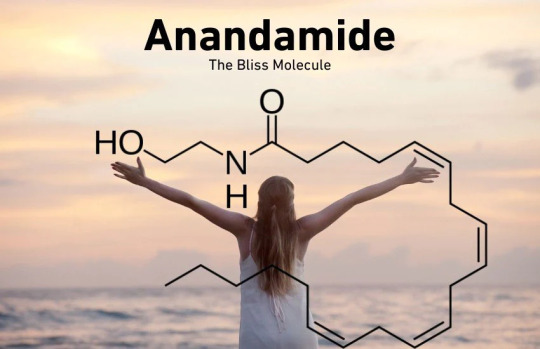
Anandamide, derived from the Sanskrit word "ananda" meaning bliss, is a neurotransmitter and endocannabinoid that plays a crucial role in regulating mood, appetite, pain perception, and memory. It has been dubbed the "bliss molecule" due to its ability to stimulate feelings of happiness and well-being. Anandamide levels are typically higher during pleasurable activities such as exercise, eating chocolate, and even during social interactions.
The Act of Giving: A Powerful Mood Booster
Acts of giving and generosity have long been associated with increased happiness and well-being. Studies have shown that people who engage in charitable acts or volunteer work experience greater life satisfaction, reduced stress, and improved mental health. This phenomenon, known as the "helper's high," is believed to be linked to the release of feel-good chemicals such as oxytocin, serotonin, and endorphins.
Recent research has also suggested a connection between acts of giving and the endocannabinoid system, specifically the production of anandamide. When we engage in altruistic behaviour, our brain releases anandamide, which in turn stimulates the production of other positive hormones and neurotransmitters. This creates a cascade of positive effects, boosting mood, reducing stress, and fostering a sense of connectedness with others.
The Science Behind Giving and Anandamide
A study conducted by researchers at the University of California, Riverside, investigated the link between prosocial behaviour and anandamide levels. Participants were divided into two groups: one group was asked to perform acts of kindness for others, while the other group was instructed to engage in activities they enjoyed. The results showed that those who performed acts of kindness experienced a significant increase in anandamide levels compared to the control group.
Another study published in the journal Nature Communications found that anandamide played a crucial role in the reward mechanisms associated with social interactions. In this study, mice were given the choice between spending time with another mouse or remaining alone. Researchers discovered that when the mice interacted with others, their anandamide levels increased, suggesting that social interactions and acts of giving may stimulate the release of this bliss molecule.
Boosting Anandamide Levels Through Generosity
While more research is needed to fully understand the complex relationship between giving, anandamide, and the endocannabinoid system, the existing evidence suggests that engaging in acts of generosity and kindness can have a profound impact on our well-being. By incorporating acts of giving into our daily lives, we can potentially boost our anandamide levels and experience the numerous benefits associated with this powerful neurotransmitter.
Here are some practical ways to incorporate giving into your routine:1. Volunteer your time: Dedicate a few hours each week to volunteering at a local charity, hospital, or non-profit organization. Not only will you be helping others, but you'll also be boosting your own mood and well-being.

2. Practice random acts of kindness: Small gestures can have a significant impact. Pay for someone's coffee, offer a genuine compliment, or help a neighbour with their groceries.
3. Donate to causes you care about: Support organizations and initiatives that align with your values by making regular donations or participating in fundraising events.
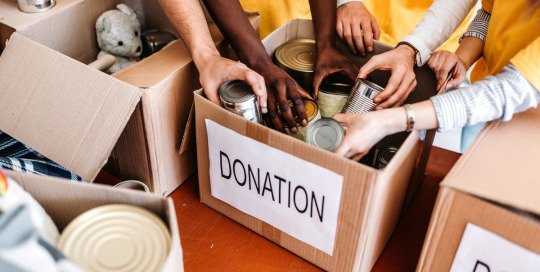
4. Be present and supportive: Offer a listening ear and emotional support to friends, family, and colleagues going through difficult times.
Conclusion
The act of giving is more than just a selfless gesture; it has the potential to improve our mental and emotional well-being by boosting anandamide levels and promoting the release of other positive hormones. By engaging in acts of generosity and kindness, we can harness the power of the endocannabinoid system to create a happier, healthier, and more connected life.
#feelgreatagain#budandtender#cbd#cbdoil#health#happiness#bliss#wellness#wellbeing#anandamide#cannabis#cbdhealth#nationalgivesomethingawayday
0 notes
Text
I'm a "3D-printing", "anandamide" and "arm candy"!
I'm stealing this from Twitter

Here's the link
I am a high-definition gateway drug body double!
30K notes
·
View notes
Text
Cannabis for Women’s Health: Natural PMS and Menopause Relief for Hormonal Balance
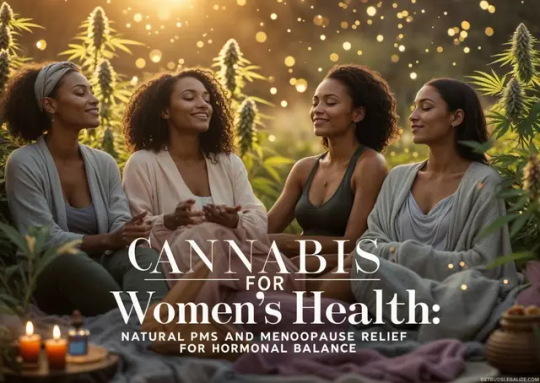


Cannabis for Women’s Health: Natural PMS and Menopause Relief for Hormonal Balance
More than 80% of women experience menstrual pain, prompting many to seek natural alternatives beyond conventional pharmaceuticals.Enter cannabis—a plant gaining widespread recognition for its ability to support women’s unique health needs. From relieving PMS symptoms and cramps to aiding menopause and enhancing sexual wellness, cannabis is emerging as a powerful ally in feminine care.As legalization expands and stigma fades, more women worldwide are turning to cannabis as a holistic wellness tool, embracing its potential to nurture both body and mind.
The Expanding Market for Women’s Health
The U.S. women’s health market is projected to surpass $58 billion by 2030, with growing attention to conditions such as infertility, menopause, endometriosis, and osteoporosis.Once stigmatized, cannabis is now being recognized as a promising natural remedy, offering new hope to millions seeking alternatives beyond traditional pharmaceuticals.
Cannabis: A Time-Tested Remedy for Women
Women have relied on cannabis for wellness for thousands of years. Ancient Mesopotamian texts, Egyptian papyri, and even Queen Victoria’s physician documented its use for easing menstrual discomfort and assisting childbirth.Now, modern science is validating these historical remedies, reaffirming cannabis’s potential in addressing women’s unique health concerns.

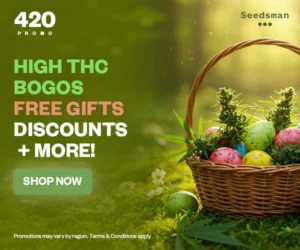
Understanding the Endocannabinoid System (ECS) and Women’s Health
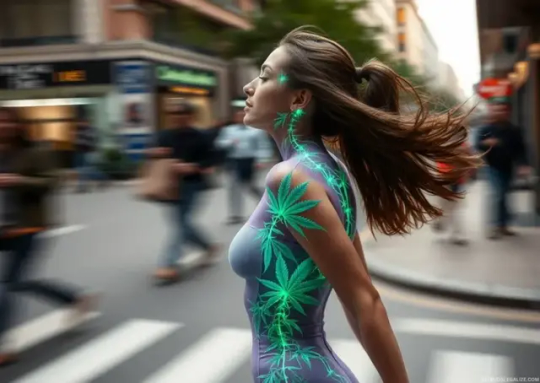
What Is the ECS?The Endocannabinoid System (ECS) is a vital regulatory network that helps maintain internal balance, influencing processes such as:- Mood and stress response - Pain perception - Appetite and digestion - Sleep cycles - Immune function - Reproductive health - Endocannabinoids: Naturally occurring molecules that bind to cannabinoid receptors to trigger ECS responses. - Cannabinoid Receptors: Found throughout the body, especially in areas critical to women’s health. CB1 receptors are located in the brain and nervous system, while CB2 receptors are found in the immune system and reproductive organs. - Enzymes: Responsible for breaking down endocannabinoids after they’ve fulfilled their function.Since the ECS regulates many aspects of female wellness, cannabis-based therapies are increasingly seen as a promising approach.
How Cannabinoids Interact with the ECS
Plant-derived cannabinoids, particularly THC and CBD, interact with the body's endocannabinoid system (ECS) in distinct ways, influencing various physiological processes related to women's health.THC: The MimicTetrahydrocannabinol (THC) closely resembles the structure of anandamide, a naturally occurring endocannabinoid. This similarity allows THC to bind directly to CB1 and CB2 receptors, particularly in the brain and reproductive system, potentially impacting:- Pain relief - Mood regulation - Ovulation - Uterine contractions - Inhibit enzymes that break down anandamide, thereby increasing endocannabinoid levels. - Reduce inflammation and pain by modulating immune responses. - Support hormonal balance by interacting with serotonin receptors and anxiety-related pathways.Together, these cannabinoids offer promising relief for menstrual discomfort, PMS-related mood swings, anxiety, and inflammation, helping women feel more in control of their wellness.

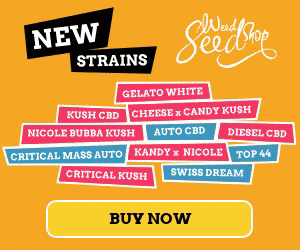

Cannabis for Period Pain, PMS, and Endometriosis
Menstrual pain (dysmenorrhea) affects nearly 84% of women, yet research on cannabis as a period pain remedy remains limited. However, growing evidence and personal experiences suggest that cannabis-infused tampons, suppositories, and topicals may provide targeted relief, helping to ease cramps, reduce inflammation, and improve overall comfort.💬 “I started using a CBD vaginal suppository during my period, and it cut my cramps in half,” shares Emma, 32, from California.How Cannabis Helps PMS SymptomsMany women turn to cannabis for relief from common PMS symptoms, including:- Irritability and mood swings - Fatigue and low energy - Insomnia and restless sleep - Bloating and crampsA 2022 review in Frontiers in Psychiatry highlighted cannabinoids' potential in mood regulation, suggesting they could serve as a natural alternative to NSAIDs or hormone therapies for managing PMS discomfort.Endometriosis and Cannabis: A Promising AlternativeEndometriosis affects 1 in 10 women of reproductive age, causing severe pain and gastrointestinal issues.A 2020 study in PLOS One found that inhaled and oral cannabis significantly reduced endometriosis-related discomfort, providing a potential avenue for natural relief.

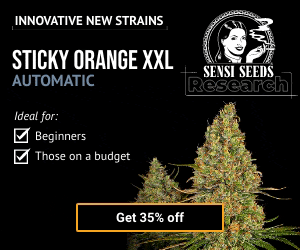
Supporting Menopause and Hormonal Balance
As estrogen levels decline, many women experience disruptive symptoms such as hot flashes, mood swings, joint pain, and insomnia. While traditional treatments exist, an increasing number of women are turning to cannabis as a natural alternative for relief.A 2020 survey published in Menopause found that most women who used cannabis for menopause reported improved sleep and reduced anxiety—a promising sign for those seeking holistic solutions.Although further research is needed, early findings and personal experiences suggest cannabis may offer meaningful relief. If you're considering cannabis for menopause, it's best to start with a low dose, monitor your body's response, and consult a healthcare provider familiar with cannabis-based therapies to ensure a safe and effective approach. Correlated Articol:

How Cannabis Helps Women Overcome Symptoms Of Menopause
How Cannabis Is Helping Women Reclaim Intimacy
Cannabis is transforming female sexual health by:- Reducing anxiety - Boosting natural lubrication - Intensifying orgasmsCannabis-infused lubricants and arousal oils are gaining popularity as tools to improve confidence, comfort, and pleasure.

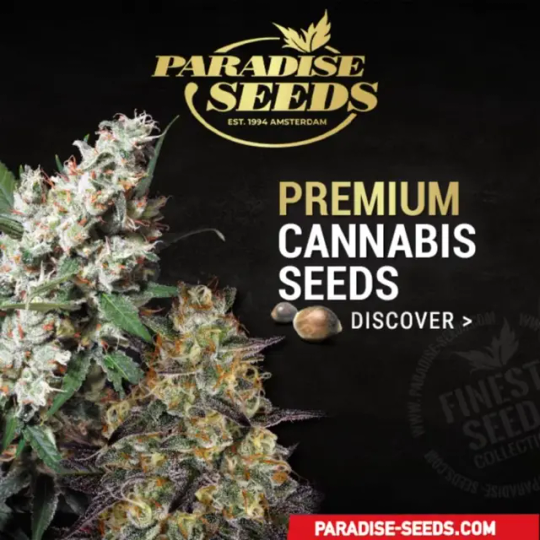
Cannabis Use During Pregnancy and Postpartum: What You Should Know

Pregnancy: A Complex ConsiderationWhile some women explore cannabis for relief from morning sickness, anxiety, or pain during pregnancy, health experts strongly advise caution. Research indicates that THC may affect fetal development, potentially leading to low birth weight and other complications.Organizations such as the CDC and FDA recommend that pregnant individuals avoid cannabis altogether due to the uncertain long-term effects on developing babies. Correlated Articol:

Is CBD Safe During Pregnancy? Risks And AssessmentsBreastfeeding and Postpartum RecoveryCannabinoids, including THC and CBD, can pass into breast milk, which raises concerns about potential effects on newborns. Read the full article
#CANNABIS#cannabisandmentalhealth#CannabisEducation#Cannabisforpainrelief#CannabisforWomen’sHealth#CBDbenefits#EndocannabinoidSystem#HolisticWellness#HormonalBalance#MEDICALCANNABIS#MenopauseSupport#NaturalRemediesforWomen#PMSRelief#ReproductiveHealth#THCandWomen’sHealth
0 notes
Text

The Science of Flow States
Research Findings
Brainwave patterns shift to theta-alpha balance
Transient hypofrontality occurs (reduced self-monitoring)
Neurochemistry changes (dopamine, endorphins, anandamide)
Performance and creativity significantly increase
Flow Triggers
Science identifies clear triggers:
Complete concentration
Clear goals
Immediate feedback
Challenge-skill balance
Science confirms: Flow states are natural, optimal human experiences that can be intentionally cultivated.
#FlowScience#FlowResearch#ConsciousMovement#QuantumFlow#FlowStates#ConnectingToSource#SpiritualGrowth#ConsciousLiving#MetaphysicalWisdom#SacredTeachings
0 notes
Text
Ate a chocolate bar. Mmm magnesium theobromine anandamide phenylethylamine dopamine serotonin oxytocin etcetera I am not a chemist.
9 notes
·
View notes